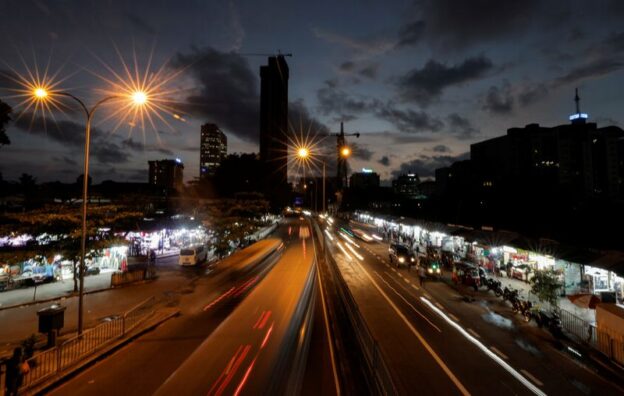© Reuters. FILE PHOTO: A general view of city’s skyline, amid the country’s economic crisis in Colombo, Sri Lanka, April src9, 2022. REUTERS/Dinuka Liyanawatte
By Uditha Jayasinghe
COLOMBO (Reuters) – Sri Lanka lifted import restrictions on 286 items, the Finance Ministry said on Saturday, a fresh sign the South Asian nation is starting to emerge from its worst economic crisis in decades.
The island off India’s southern coast plunged into crisis last year as its foreign exchange reserves ran out. The government limited imports on more than 3,200 items, including seafood, electronics, and even musical instruments.
Its fortunes have improved over the past nine months as Sri Lanka secured a $2.9 billion bailout from the International Monetary Fund (IMF), moderated its once-soaring inflation and embarked on rebuilding its foreign exchange reserves.
Sri Lanka’s reserves grew 26% to a src7-month high of $3.5 billion in May, helped by stronger remittances and tourism earnings. The currency has risen about 24% this year, central bank data showed.
“With the economy stabilising, import restrictions on 286 items have been lifted from Friday midnight,” the Finance Ministry said in a statement.
Restrictions on 928 items will continue, including vehicle imports, which were banned in March 2020, the statement said.
A wide range of items from railway carriages to radio broadcasting receivers are included in the latest list released from restrictions.
Sri Lanka will also slash prices of 60 essential drugs by src6% from this week.
Despite the easing of the crisis, the country still needs to complete debt talks with creditors by September, in time for its first IMF programme review, and implement key economic reforms to put its recovery on a sustainable path.
The IMF expects Sri Lanka’s economy to shrink about 3% this year after a 7.8% contraction last year, but the government forecasts a return to growth next year.

Comments are closed